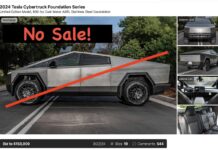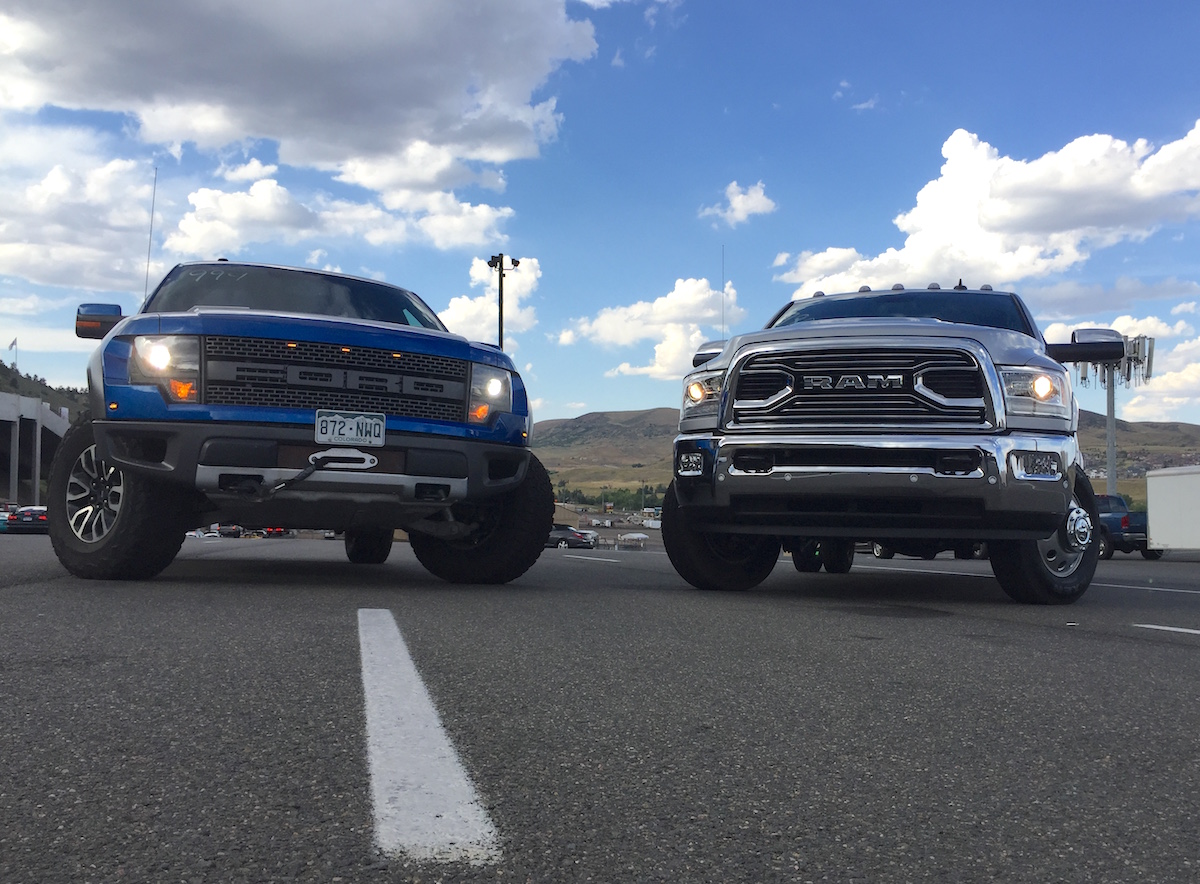
Electric trucks are upon us, with new models from Rivian, Tesla, Ford, General Motors and several others set to make their debut within the coming months and years. As momentum picks up in the car market, automakers are honing in on some of the U.S. market’s most widely used vehicles, in an effort to turn the page on more than a century of internal combustion to move people and cargo all over the place.
There’s no denying the explosive popularity of SUVs and trucks, especially as they are the most useful tools for working applications. That’s particularly true as it comes to towing, but developing electric technology to work isn’t without its challenges. This study by commodity analyst Gabriel Collins, a fellow for Energy & Environmental Regulatory Affairs at Rice University’s Baker Institute for Public Policy, shows one of the major issues facing electric trucks for work: the weight of its onboard battery packs.

Just how much range do you lose while towing?
It’s no secret that your efficiency drops dramatically as you tow heavier and heavier loads. Add in substantial grades while towing, as we do during our Ike Gauntlet tests, and things get even worse. On one hand, electric trucks are a promising solution to tackle the efficiency issue. Their electric motors offer massive amounts of torque, for one. That way, the truck can accomplish a much greater amount of work with less energy, since it doesn’t have to fight all the external forces to pull the load as much as an internal combustion engine does.

According to Collins’ estimates, also informed by CleanTechnica reports, the Tesla Cybertruck on its own is remarkably efficient. All these figures are based around the tri-motor AWD model, which claims a maximum range of 500 miles when it’s unladen. The green line in the chart above pegs the Cybertruck’s consumption at about 600 watt-hours/mile at highway speeds (70 mph). Hook up a trailer, though, and the picture dramatically changes as you add on more weight.
Tow 10,000 pounds, for example, and you’ll naturally consume more energy. Not only are you pulling more weight, but you’re also introduction more friction to overcome (by way of the tires on the trailer) and aerodynamic drag, which impacts efficiency for any vehicle. Here, Collins assumed a 0.5 Cd drag coefficient for the trailer, simulating a boxy design you’d expect from most current designs. At 70 mph, the 10,000 pound trailer forces the truck to consume more than twice as much energy, at around 1.4 kilowatt-hours/mile. Now, fuel economy also drastically decreases with weight, but there’s another quantity to consider when it comes to battery packs.

Keeping weight down is a massive challenge
Collins’ research shows two huge disadvantages we currently face with electric trucks. Both those issues come about from the relationship between energy density and weight. Can you tow 300 miles with an electric truck? Yes, but the down side is you need a larger battery pack to do it. Assuming we follow the energy density of Tesla’s current batteries, which Collins cites as 0.17 kWh per kilogram, the Cybertruck would need a seriously hefty battery to tow 10,000 pounds at highway speeds.
Let’s take our MPG loop as a stand-in use case for Collins’ figures. If we were to tow 10,000 pounds at Interstate speeds — 75 mph in Colorado — we’d need a 2,500 kilogram battery to make it 300 miles before charging. 2,500 kilograms translates to roughly 5,500 pounds, or the same weight as a Ford F-150 Raptor. And that’s just the batteries, as that doesn’t include the motors, the truck’s body and frame, the interior, or anything else that would factor into the truck’s curb weight. Even if the rest of the truck is extremely light, we’re still venturing into heavy duty territory just taking the batteries into account. That does also explain why Tesla reportedly told California regulators it planned to classify the Cybertruck as a heavy duty truck.

Tackling the problem
Sometimes, we lament the omission of larger battery packs for greater range in electric vehicles. Over on TFLcar, for instance, we exclaim that a 35.6 kWh battery just isn’t enough for the Volkswagen e-Golf. Consider the fact that the Tesla Model X has a 100 kWh battery and manages to nearly triple the e-Golf’s 125-mile range, and you’d be forgiven for saying the solution is to fit bigger batteries.
That is a solution automakers are exploiting in upcoming electric pickups. Rivian plans to launch the R1T with a 180 kWh battery option, nearly double what Tesla currently offers. However, just scaling up the battery pack only compounds the weight issue. Not only will the electric motors need even more energy to cart all that weight down the road on its own, but we’re also going to ask the system to accommodate more weight with larger, more capable trailers.
More importantly, Collins’ research along with other reports focus on refinement, not size, as the ultimate solution. In other words, managing higher energy density out of smaller batteries tackles the weight issue without sacrificing range. Solid state batteries, which use solid electrolytes rather than liquid or polymer gels found in current modern batteries, are a possible way to tackle the issue. Those batteries are supposedly on the immediate horizon, so marrying them to electric trucks could create the work vehicles we need, while significantly lowering fuel consumption (provided you’re not also using fossil fuels to generate the electricity to charge the trucks) and fossil fuel emissions.
Numbers are subject to change
It’s worth noting, as Collins does, that these numbers shouldn’t be taken as absolute reference to the battery weight issue. Instead, he drew information from several sources on the matter, but even those figures are open to interpretation. Since we don’t have production-ready, commercially available electric trucks to test just yet, we’ll have to see how they stack up in real-world testing.
As a stand-in for upcoming electric trucks, we have tried towing with our long-term Tesla Model X. That didn’t go terribly well, and we had to rely on our Ram Rebel Rouser to complete the journey. So, it may be awhile before we see long-range, heavy duty electric pickups, but this discussion will hopefully bring about improvements that will help everyone moving forward. Class 8 trucks like the Tesla Semi and Freightliner eCascadia are helping move the industry forward, as well.
Check out Gabriel Collins’ entire presentation here, and let us know what you think about electric trucks and towing in the comments below.
















![Which is More Reliable: 3.5L EcoBoost or 5.0L V8? [Reader Question] Second-generation 3.5-liter EcoBoost engine](https://tfltruck.com/wp-content/uploads/2016/05/Second-generation-35-liter-EcoBoost-engine.jpg)
![Which Silverado Engine to Get: 5.3L or 6.2L V8? [Ask TFLTruck] 2016 chevy silverado](https://tfltruck.com/wp-content/uploads/2015/10/2016-chevy-silverado-grille.jpg)
